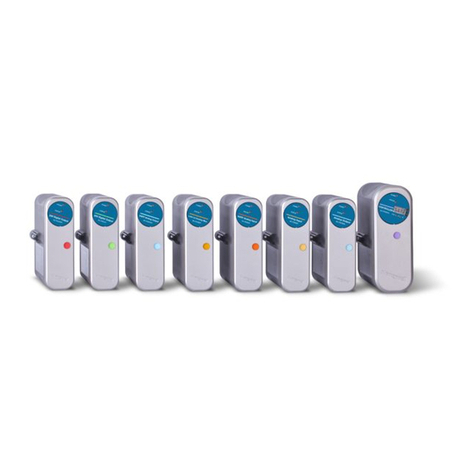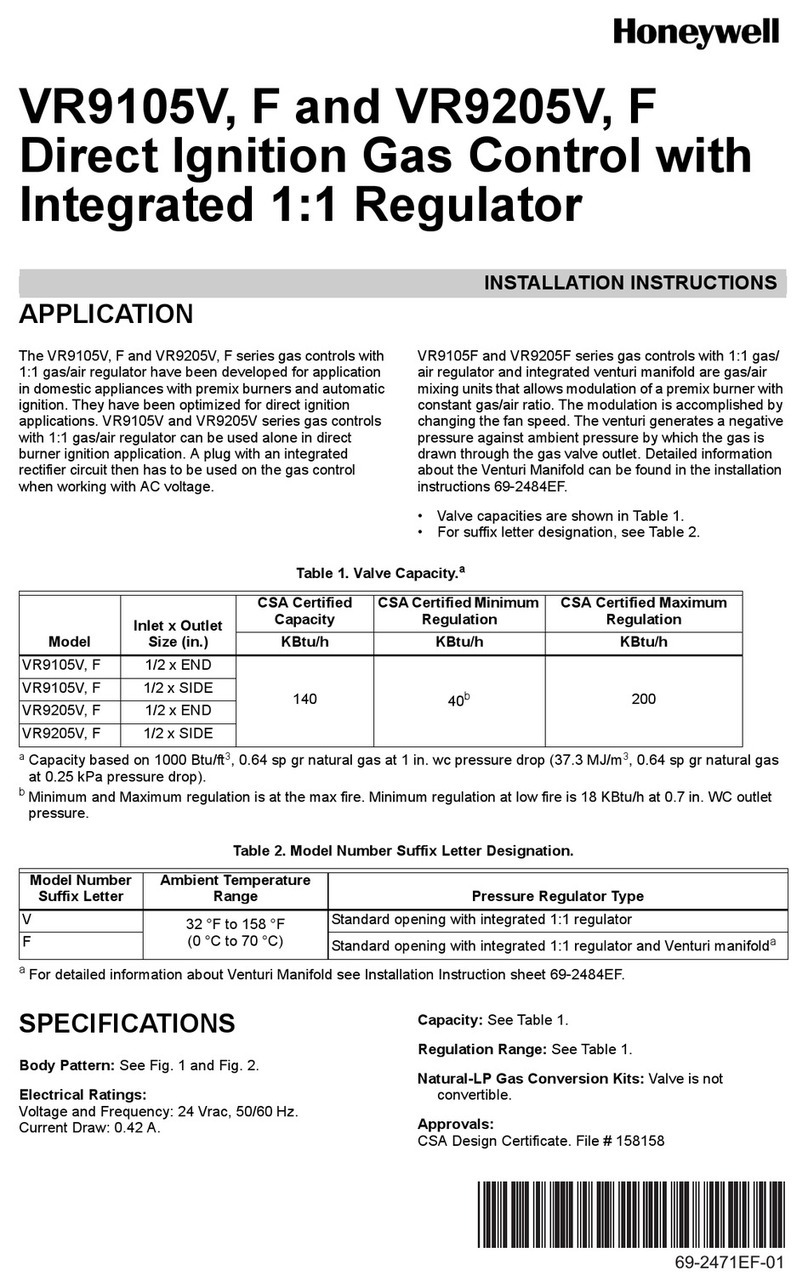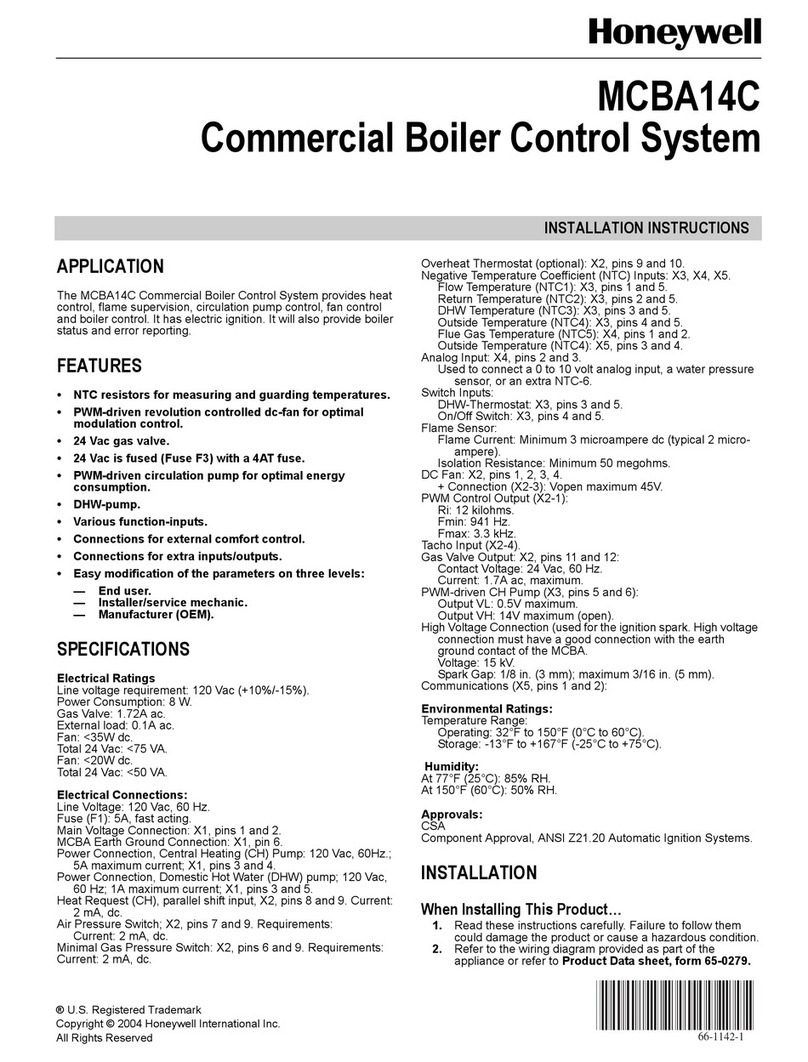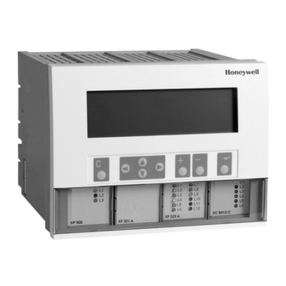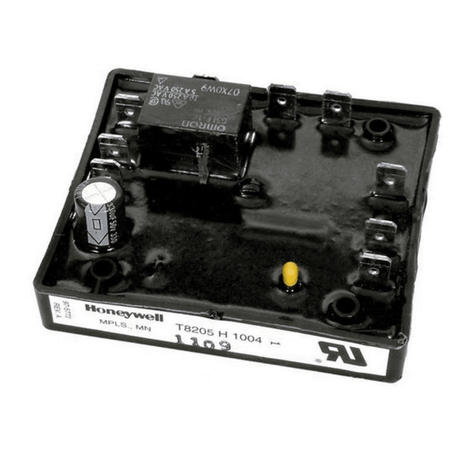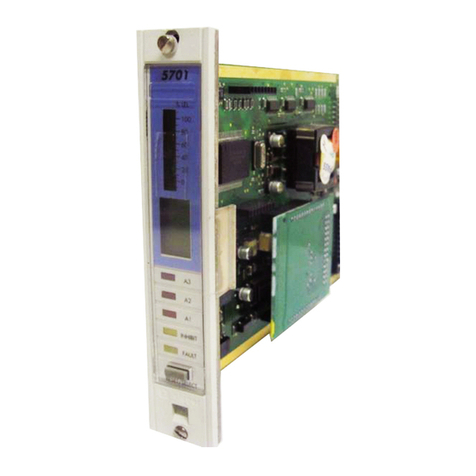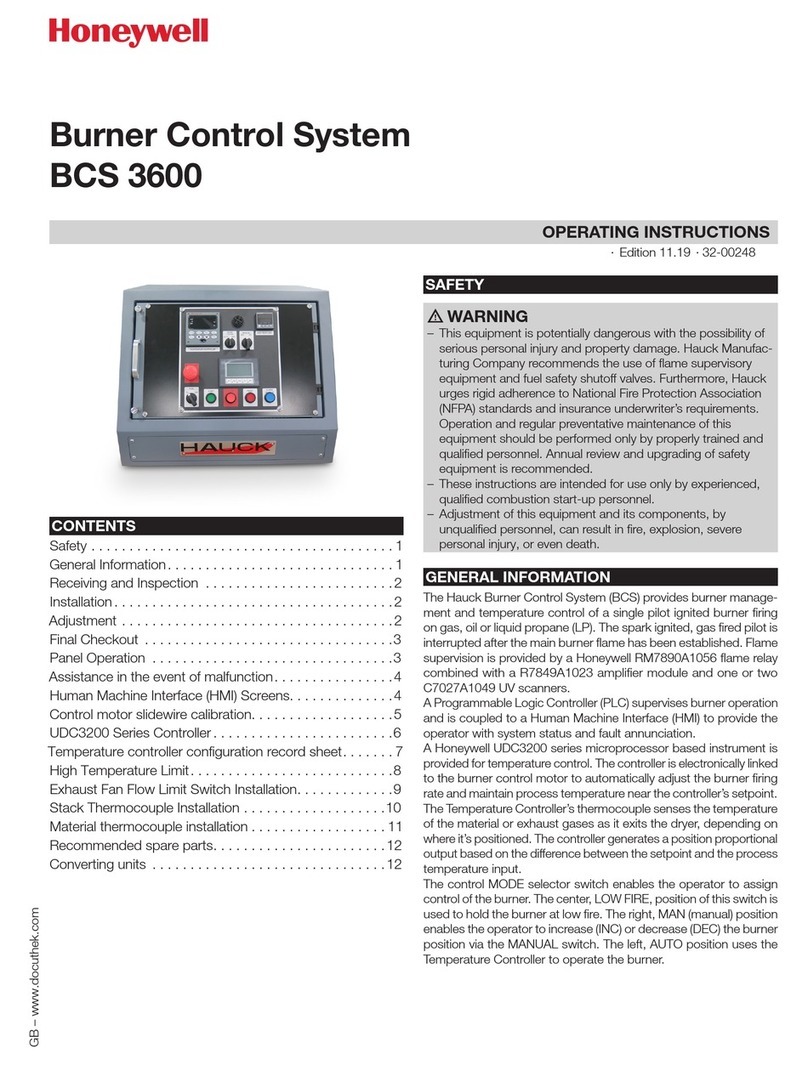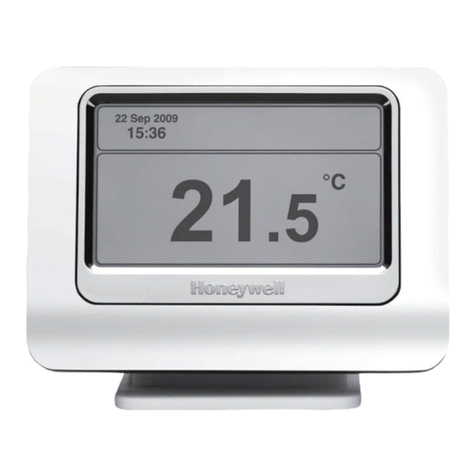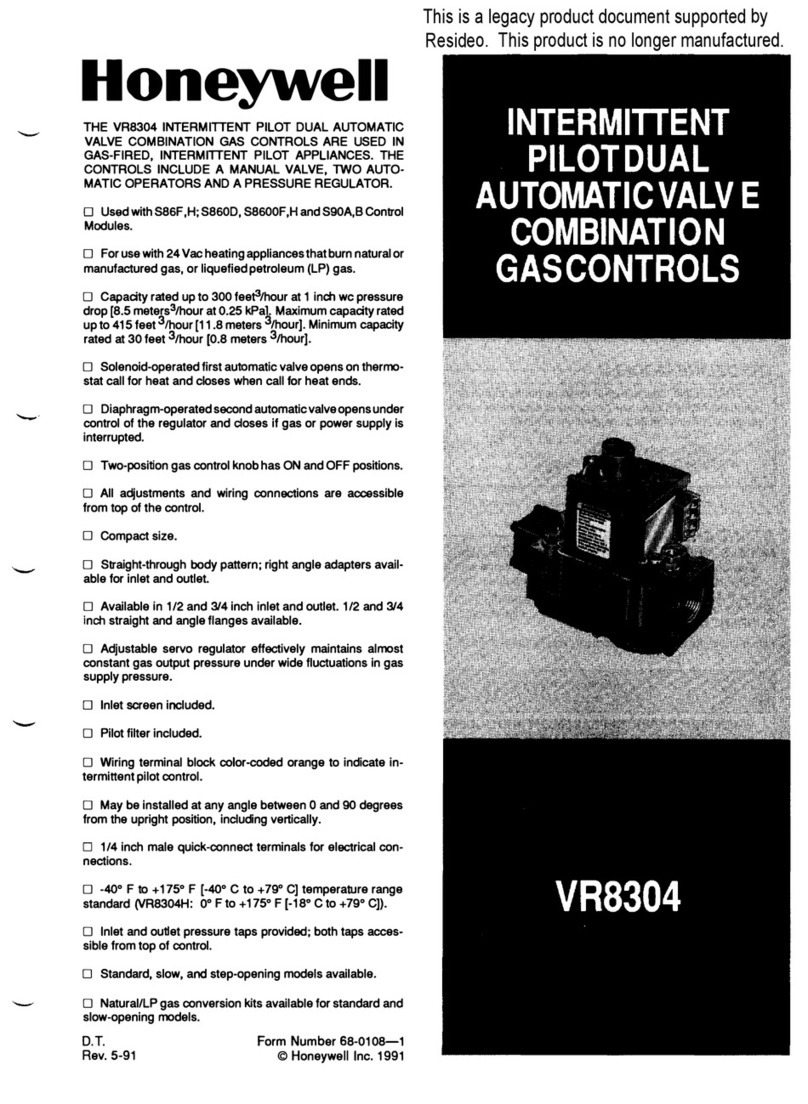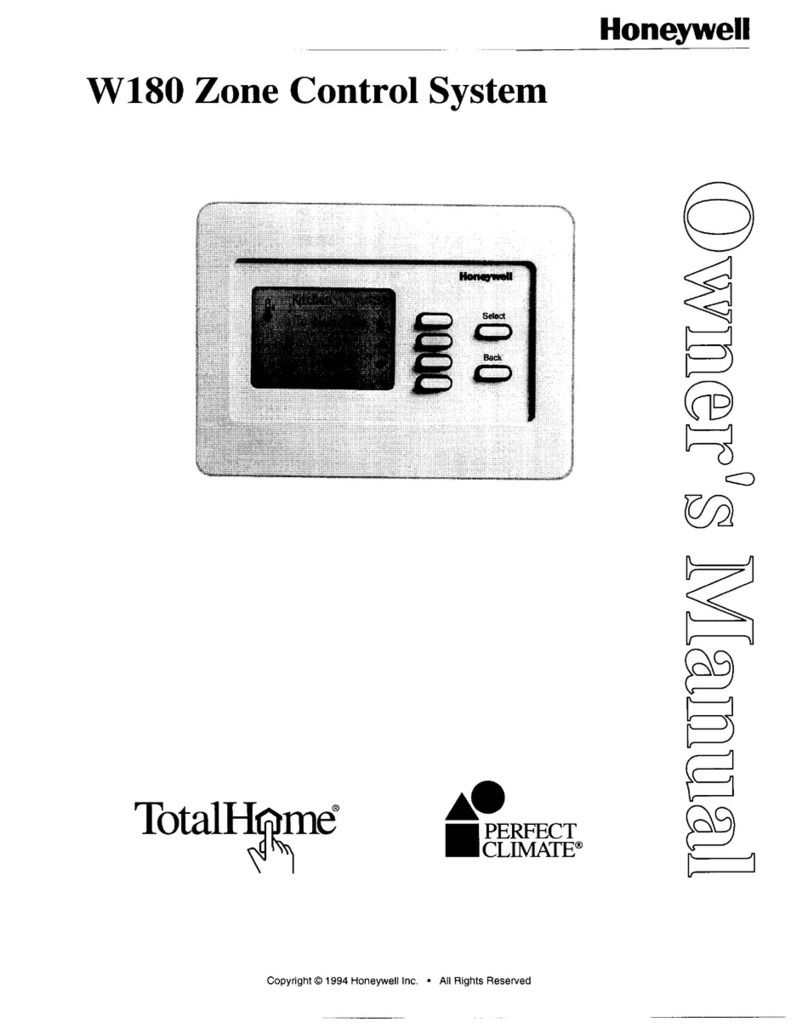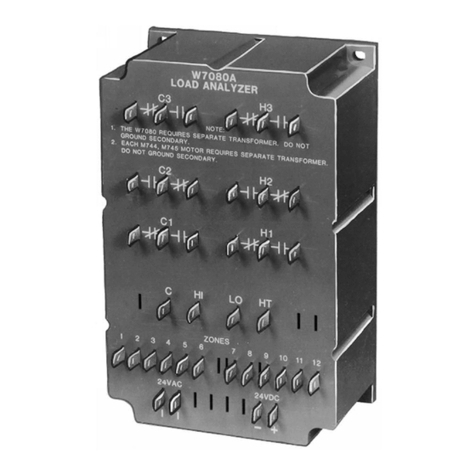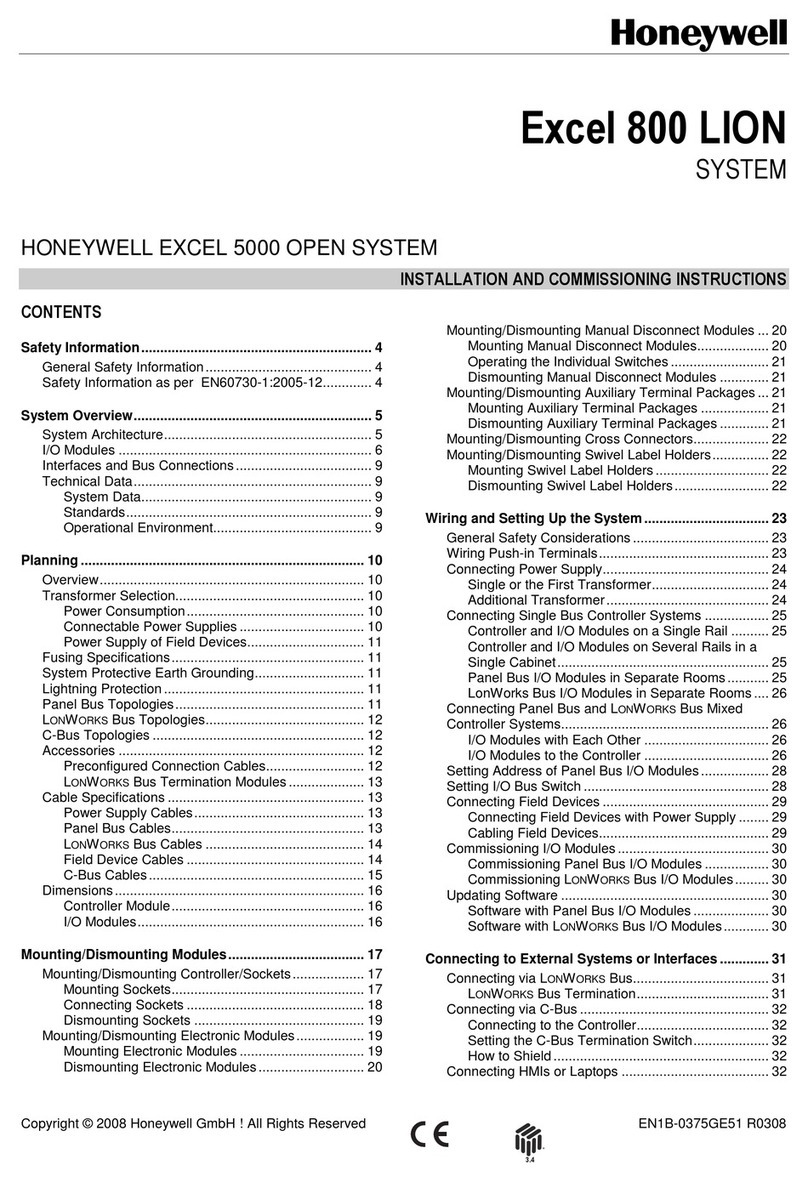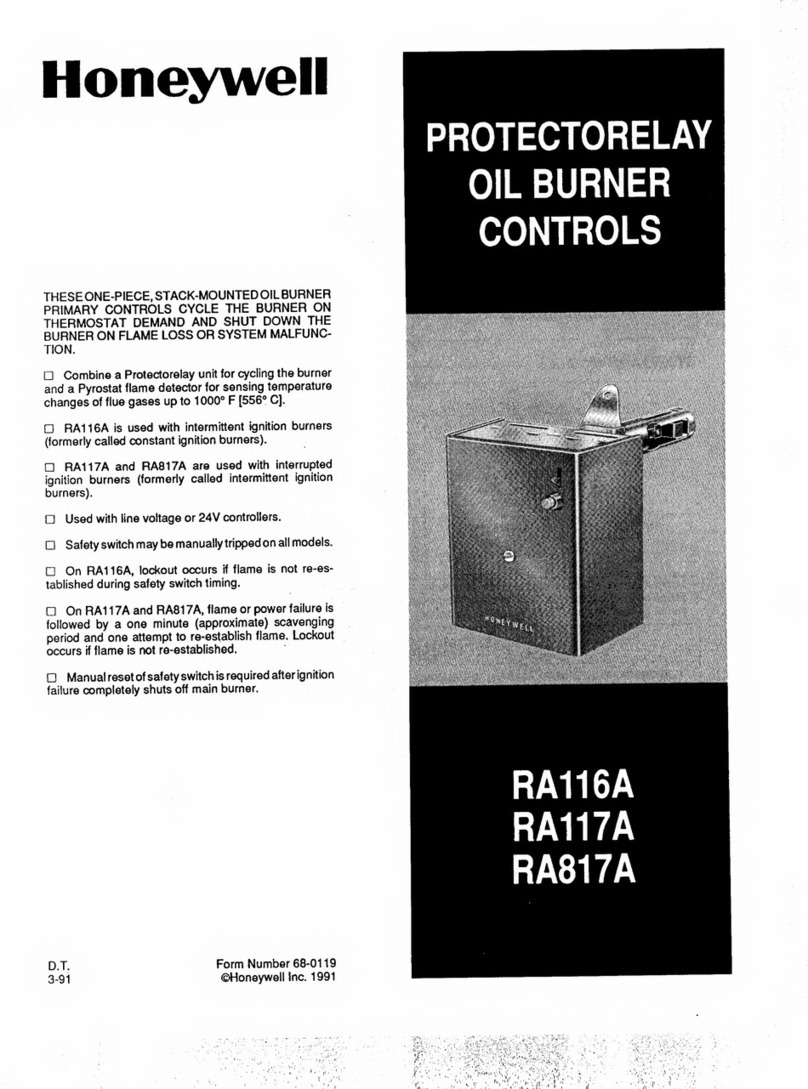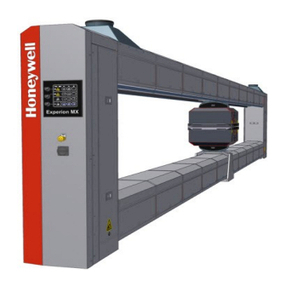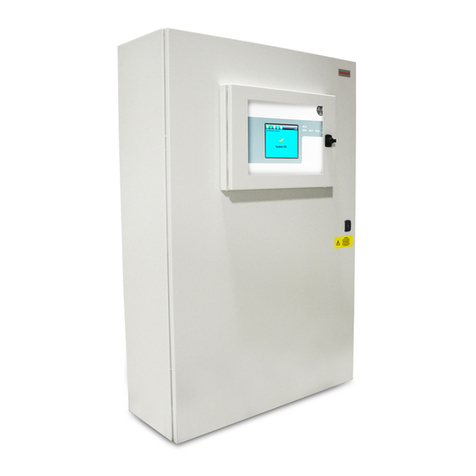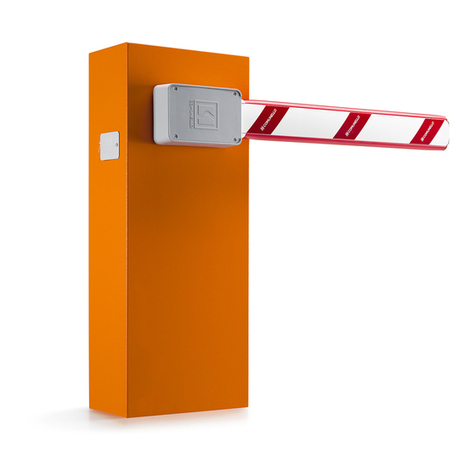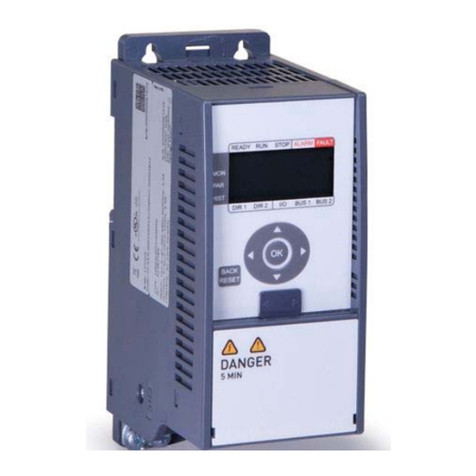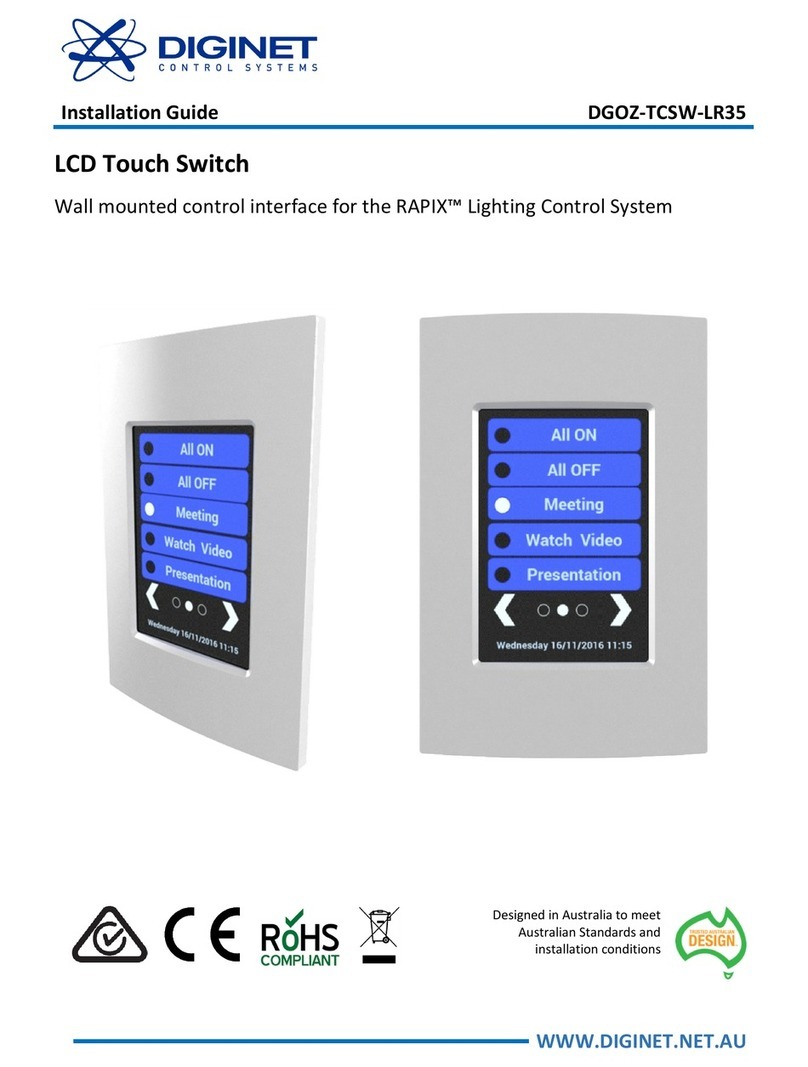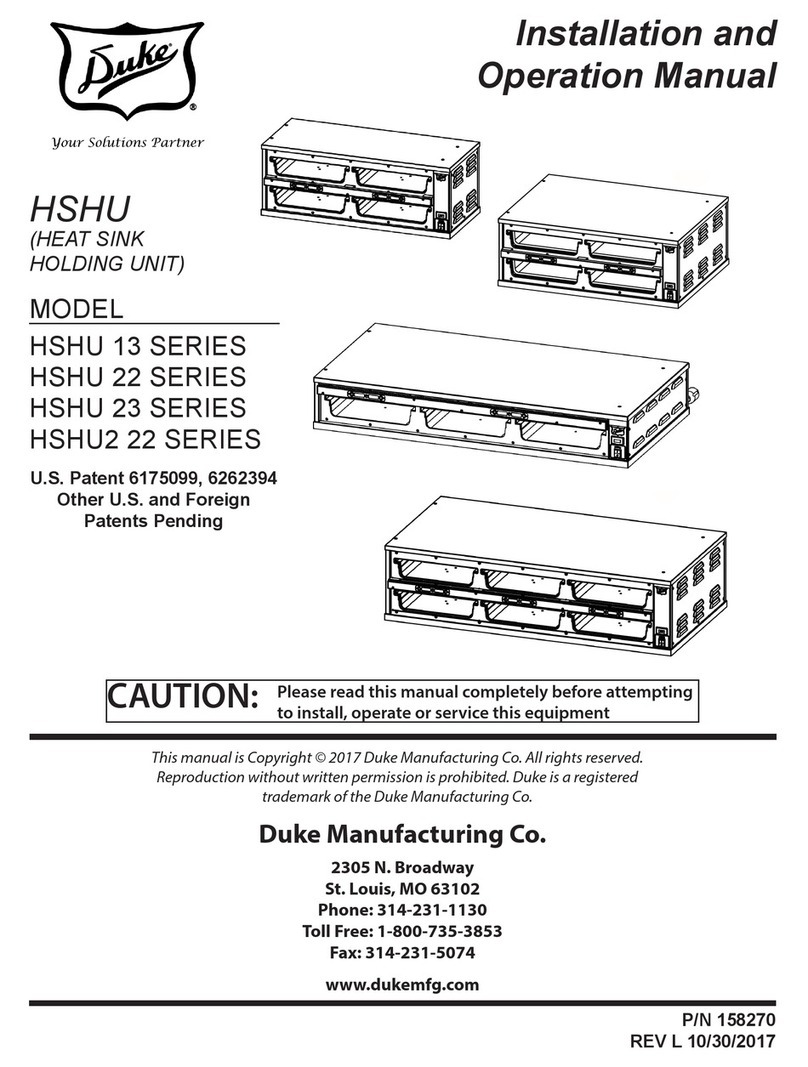
7 69-0814—1
Step-Opening Pressure Regulator
1. The gas control outlet pressure should match the
manifold pressure listed on the appliance nameplate.
2. With the main burner operating, check the gas con-
trol flow rate using the meter clocking method.
3. If desired flow rate is not as stamped on the control,
check the inlet pressure using a manometer at inlet pres-
sure tap or upstream of the gas control. Regulators are
fixed.Theyarenotadjustable. If the inlet pressure isinthe
normal range (refer to Table 3), replace the entire gas
control. Otherwise, take the necessary steps to provide
proper gas pressure to the gas control.
4. Carefully check main burner lightoff at the step pres-
sure. Make sure the main burner lights smoothly and
without flashback to the orifice and that all ports remain
lit. Cycle the main burner several times, allowing at least
30 seconds between cycles for the regulator to resume the
step function. Repeat after allowing main burner to cool.
CHECK SAFETY SHUTDOWN PERFORMANCE
WARNING
FIRE OR EXPLOSION HAZARD
CAN CAUSE PROPERTY DAMAGE,
SEVERE INJURY, OR DEATH.
Performthe safety shutdown test any time work is
done on a gas system.
NOTE: Read steps 1 through 7 below before starting, and
compare to the safety shutdown or safety lockout tests
recommended for the intermittent pilot (IP) module.
Where they differ, use the procedure recommended for
the module.
1. Turn off knobs on entire gas control.
2. Set thermostat or controller above room temperature
to call for heat.
3. Watch for spark at pilot burner either immediately or
following prepurge. See IP Module specifications.
4. If module has timed ignition, time the length of the
spark operation. See IP Module specifications.
5. After the module locks out, open gas control knobs
and make sure there is no gas flow to the pilot or main
burner. With modules that continue spark until pilot lights
or system is shut down manually, pilot should light when
gas control knobs are opened.
6. Setthermostat below room temperatureand wait one
minute.
7. Operate system through one complete cycle to make
sure all controls operate properly.
Maintenance
WARNING
FIRE OR EXPLOSION HAZARD
CAN CAUSE PROPERTY DAMAGE,
SEVERE INJURY, OR DEATH.
Do not disassemble the gas control or either
valve. They contain no replaceable components.
Attempted disassembly or repair can damage the
gas control.
Regularpreventivemaintenance isimportantinapplica-
tions such as commercial cooking, agricultural and indus-
trial operations that place a heavy load on system controls
because:
• In many such applications, particularly commercial
cooking, the equipment operates 100,000 to 200,000
cyclesper year . Such heavycycling can wear out the
gas control in one to two years.
• Exposure to water, dirt, chemicals and heat can dam-
agethe gas controlandshut down the controlsystem.
Themaintenanceprogramshouldincluderegularcheck-
out of the entire gas control; see Startup and Checkout
section. To check out the control system, see the appliance
manufacturer literature. Maintenance frequency must be
determined individually for each application. Some con-
siderations are:
•Cyclingfrequency.Appliancesthatmaycycle100,000
times annually should be checked monthly.
•Intermittent use. Appliances that are used seasonally
shouldbecheckedbeforeshutdownandagainbefore
the next use.
•Consequence of unexpected shutdown. Where the
cost of an unexpected shutdown would be high, the
system should be checked more often.
•Dusty, wet, or corrosive environment. Since these
environmentscancause the gas control to deteriorate
more rapidly, the system should be checked more
often.
If the gas controls will be exposed to high ammonia
conditions;e.g.,thoseusedingreenhousesoranimal barns,
contact your Honeywell sales representative to request a
gas control with corrosion resistant construction.
The entire gas control should be replaced if:
• It does not perform properly during checkout or
troubleshooting.
• The gas control knobs are hard to turn.
• The gas control is likely to have operated for more
than 200,000 cycles.
Service
WARNING
FIRE OR EXPLOSION HAZARD
CAN CAUSE PROPERTY DAMAGE,
SEVERE INJURY, OR DEATH.
Do not disassemble the gas control or either
valve. They contain no replaceable components.
Attempted disassembly or repair will damage the
gas control.
CAUTION
Do not apply a jumper across or short the valve
leadwires. Doing so can burn out the heat antici-
pator in the thermostat or damage the electronic
module.
IMPORTANT: Allow 60 seconds after shutdown before
re-energizing step-opening model to assure lightoff
at step pressure.
!
!
!
!

